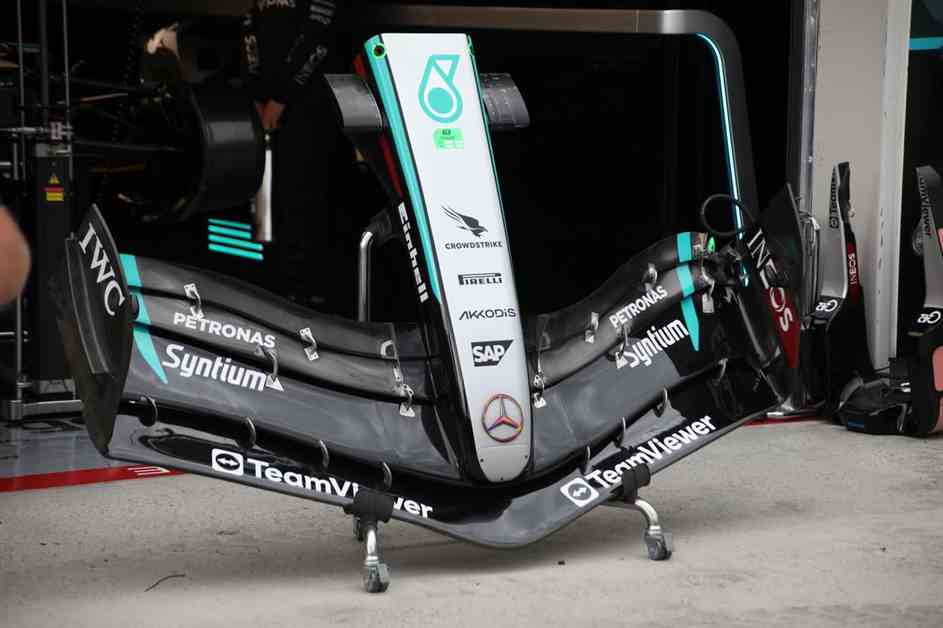Mercedes’ New Wing Vital for Aerodynamic Balance
Mercedes is facing a challenge with a car that lacks consistency in high and low-speed corners. The team found that improving performance in one type of turn would negatively impact the other. For example, eliminating understeer in slow corners would result in oversteer in fast corners.
To address this issue, maintaining aerodynamic balance across different types of turns is crucial. According to James Allison, Mercedes’ technical director, mechanical adjustments can be made, but they may compromise the driver’s confidence. Designing a wing that doesn’t lead to extreme changes in aerodynamic characteristics is a much better approach.
The creation of the new wing aims to remedy this aerodynamic issue by avoiding shifting the aerodynamic balance too far forward at high speeds. The proximity to the ground is essential for these cars, hence the large front wings. However, this setup can make the car more twitchy at higher speeds, requiring adjustments to maintain balance.
Mercedes is exploring ways to design a wing that doesn’t continuously increase downforce as the car accelerates. This involves the complex realm of aerodynamic elasticity, where slight flexing of the wing at high speeds can reduce downforce production to address balance issues. Ensuring compliance with FIA’s flexibility tests while achieving the desired on-track performance is crucial.
While Montreal may not showcase the new wing’s full potential due to its similar corner speeds, Mercedes anticipates greater benefits at upcoming tracks with varying corner speeds. The team aims to maximize the advantages of the new wing design in races to come.




